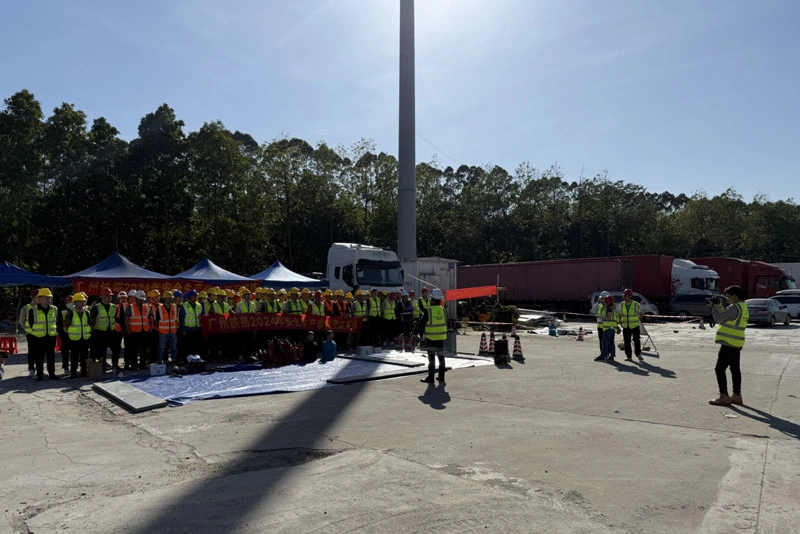Your phone connects instantly, but have you thought about what makes this possible? Mobile networks need strong foundations. At Junjiang Construction, we build the steel skeletons that keep your signals flowing. Base Transceiver Stations (BTS) are physical tower structures supporting antennas and telecom equipment. They transmit/receive wireless signals between mobile devices and network cores, enabling voice calls and internet access across geographic areas. Three decades of building communication towers taught me that BTS reliability directly impacts call quality. Let’s explore why these structures remain essential in our mobile-dependent world.
Ever lost signal during important calls? BTS stations prevent these frustrations. These installations serve as localized cell hubs in mobile networks. A BTS contains antennas, transceivers, power amplifiers, and control systems mounted on towers. Working together, these components convert radio signals between mobile devices and service providers' networks.

Signal Conversion Process
| Component | Function | Industry Standard |
|---|---|---|
| Antennas | Send/Receive RF signals | 700MHz-2.6GHz frequency range |
| TRX Module | Digital-to-analog conversion | ITU-T G.8271 time sync |
| Amplifiers | Boost signal strength | 40W-80W output typical |
Structural Requirements
Wind resistance: 200km/h (monopole) to 300km/h (lattice)
Ice load capacity: 20-50mm radial ice buildup
Foundation depth: 5-15m depending on soil type Our galvanized steel monopoles exceed EIA/TIA-222-H standards. In Typhoon Lekima (2019), our Jiangsu province towers maintained 99.98% uptime.
Traditional towers fail under extreme weather. Modern designs address this through material science and smart engineering. Key BTS components include structural tower, equipment shelter, power systems, and transmission lines. At Junjiang, we use hot-dip galvanizing (550g/m² coating) for 15+ year corrosion resistance.
Tower Types Comparison
| Type | Height Range | Installation Time | Best For |
|---|---|---|---|
| Monopole | 15-50m | 3-5 days | Urban areas |
| 3-Legged | 30-100m | 7-10 days | Rural terrain |
| Guyed | 100-200m | 14-21 days | Remote locations |
Power Backup Systems
Primary: Grid connection (380V AC)
Secondary: Diesel generators (48h runtime)
Tertiary: Lithium battery banks (8h emergency)
We deployed 47 tropicalized towers in Indonesia's equatorial climate. Specialized zinc-aluminum coatings reduced maintenance needs by 40% compared to conventional designs.
Mobile data traffic grows 30% annually. Without proper infrastructure, networks collapse under load. BTS towers maintain signal quality, expand coverage areas, and handle multiple frequency bands. Junjiang’s modular designs allow easy upgrades from 4G to 5G with 60% less downtime.
Coverage vs Capacity Balance
| Tower Height | Coverage Radius | Max Users Supported |
|---|---|---|
| 30m | 3km | 1,200 (4G) |
| 60m | 7km | 800 (4G) |
| 100m | 15km | 400 (4G) |
Frequency Considerations
Lower bands (700MHz): Better coverage
Higher bands (3.5GHz): Faster speeds
Carrier aggregation combines multiple bands
In Lagos, our tilt-adjustable antennas helped a telecom client reduce interference by 35% while maintaining 98% signal strength across 250km² coverage.
5G requires denser networks - experts predict needing 3-5x more towers. Future designs must balance performance with space constraints. Emerging tower base transceiver station (BTS) trends include AI-driven maintenance, energy-harvesting designs, and multi-operator shared infrastructure. Our R&D team tests turbine-integrated towers that generate 20% of their power needs.
1G Era (1980s)
100m+ lattice towers
Analog FM transmission
4G Transition (2010s)
4.5m diameter monopoles
Remote monitoring systems
5G Future
Small cells every 200m
Active antenna units (AAUs) We recently installed Singapore's first 3D-printed tower base. Using high-performance concrete, the process cut construction waste by 65% while meeting seismic zone 4 requirements.
BTS towers form mobile networks' structural foundation. As data demands grow, innovative engineering ensures reliable connectivity worldwide. Quality infrastructure starts with robust design. At Junjiang steel tower factory, we recognize the vital role that Tower Base Transceiver Stations (BTS) play in modern telecommunications. These towers are the backbone of mobile connectivity, providing the structural support necessary for antennas, transmission equipment, and other critical components. Our team specializes in designing and fabricating durable, weather-resistant BTS towers that meet international standards and withstand harsh environments. Whether it's a monopole, 3-legged, or 4-legged configuration, our focus is always on maximizing signal stability, structural safety, and cost-efficiency. With proven experience across diverse terrains and climates, we take pride in helping telecom providers expand reliable coverage with confidence and precision.
